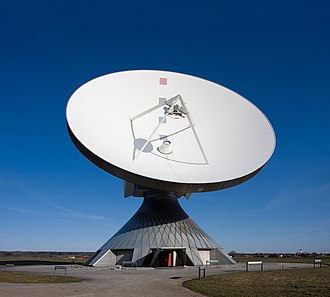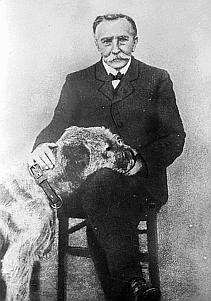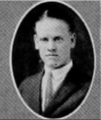The Telecommunication Portal

Telecommunication, often used in its plural form, is the transmission of information with an immediacy comparable to face-to-face communication. As such, slow communications technologies like postal mail and pneumatic tubes are excluded from the definition. Many transmission media have been used for telecommunications throughout history, from smoke signals, beacons, semaphore telegraphs, signal flags, and optical heliographs to wires and empty space made to carry electromagnetic signals. These paths of transmission may be divided into communication channels for multiplexing, allowing for a single medium to transmit several concurrent communication sessions. Several methods of long-distance communication before the modern era used sounds like coded drumbeats, the blowing of horns, and whistles. Long-distance technologies invented during the 20th and 21st centuries generally use electric power, and include the telegraph, telephone, television, and radio.
Early telecommunication networks used metal wires as the medium for transmitting signals. These networks were used for telegraphy and telephony for many decades. In the first decade of the 20th century, a revolution in wireless communication began with breakthroughs including those made in radio communications by Guglielmo Marconi, who won the 1909 Nobel Prize in Physics. Other early pioneers in electrical and electronic telecommunications include co-inventors of the telegraph Charles Wheatstone and Samuel Morse, numerous inventors and developers of the telephone including Antonio Meucci and Alexander Graham Bell, inventors of radio Edwin Armstrong and Lee de Forest, as well as inventors of television like Vladimir K. Zworykin, John Logie Baird and Philo Farnsworth.
Since the 1960s, the proliferation of digital technologies has meant that voice communications have gradually been supplemented by data. The physical limitations of metallic media prompted the development of optical fibre. The Internet, a technology independent of any given medium, has provided global access to services for individual users and further reduced location and time limitations on communications. (Full article...)
Selected article -

General images
Things to do
 |
Here are some tasks awaiting attention:
|
Selected biography -

Charles Bourseul (28 April 1829 – 23 November 1912) was a pioneer in development of the "make and break" telephone about 20 years before Bell made a practical telephone.
Bourseul was born in Brussels, Belgium, and grew up in Douai, France. His father was a French army officer. Charles worked for the telegraph company as a civil engineer and mechanic. He made improvements to the telegraph system of L. F. Breguet (a French instrument maker) and Samuel F. B. Morse. Charles Bourseul experimented with the electrical transmission of the human voice and developed an electromagnetic microphone, but his telephone receiver was unable to convert electric current back into clear human voice sounds. (Full article...)Did you know (auto-generated) -

- ... that the 1988 closure of WLEE, once one of the top radio stations in Richmond, Virginia, also took WBBL, a church station in existence for nearly 65 years, off the air for good?
- ... that Dave Frederick has been referred to as the "Sussex County humorist-teacher-writer-radio-host-philosopher dude"?
- ... that Christian radio station KIXL near Austin, Texas, pulled an anti-pornography program off-air in mid-transmission because of its graphic descriptions of gay sex?
- ... that the Australian case Bradley v Commonwealth held that it was unlawful to unilaterally cut off telephones to a Rhodesian information office?
- ... that radio station WBML made its first broadcast just one hour after the funeral of its manager-to-be?
- ... that Bell Labs' TD-2 microwave-relay system was used to carry television signals and telephone calls across North America?
Related portals
Topics
Subcategories
Associated Wikimedia
The following Wikimedia Foundation sister projects provide more on this subject:
-
Commons
Free media repository -
Wikibooks
Free textbooks and manuals -
Wikidata
Free knowledge base -
Wikinews
Free-content news -
Wikiquote
Collection of quotations -
Wikisource
Free-content library -
Wikiversity
Free learning tools -
Wiktionary
Dictionary and thesaurus


























































































